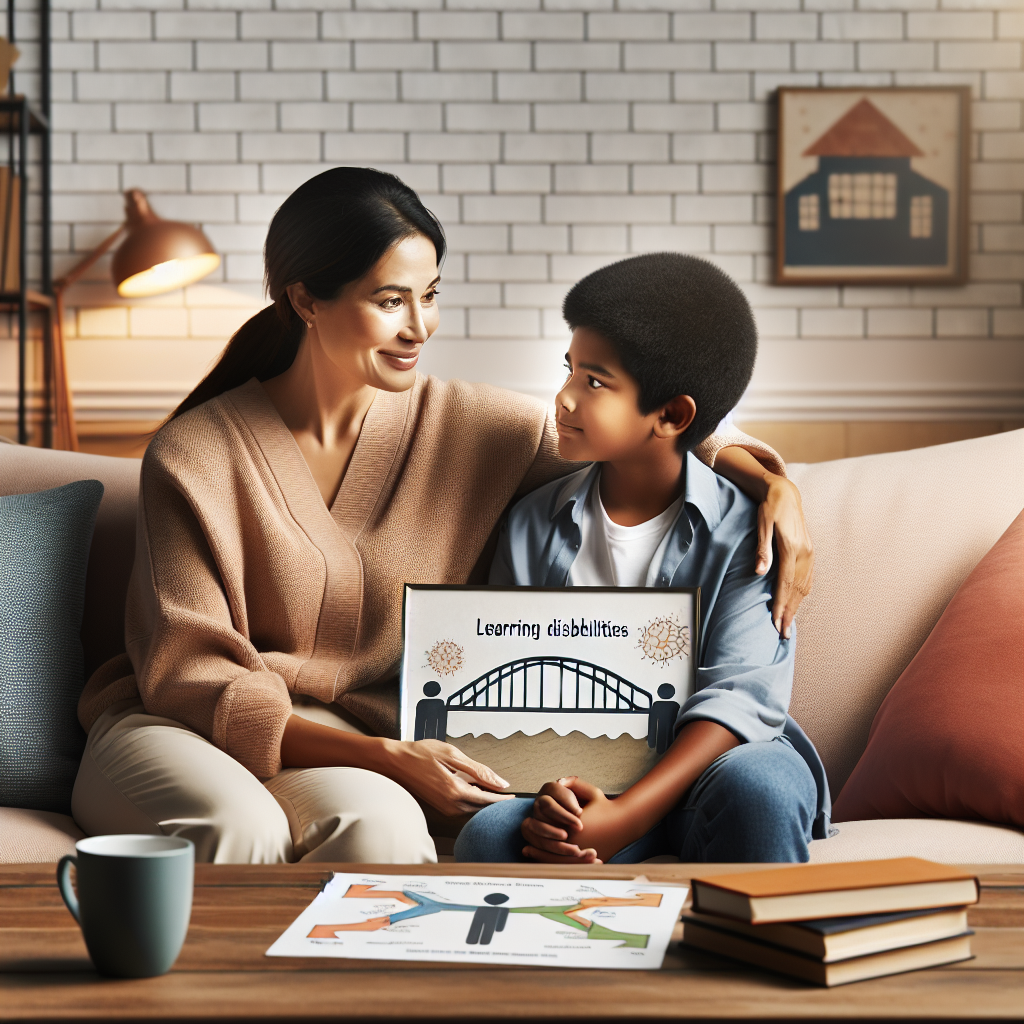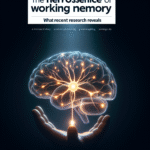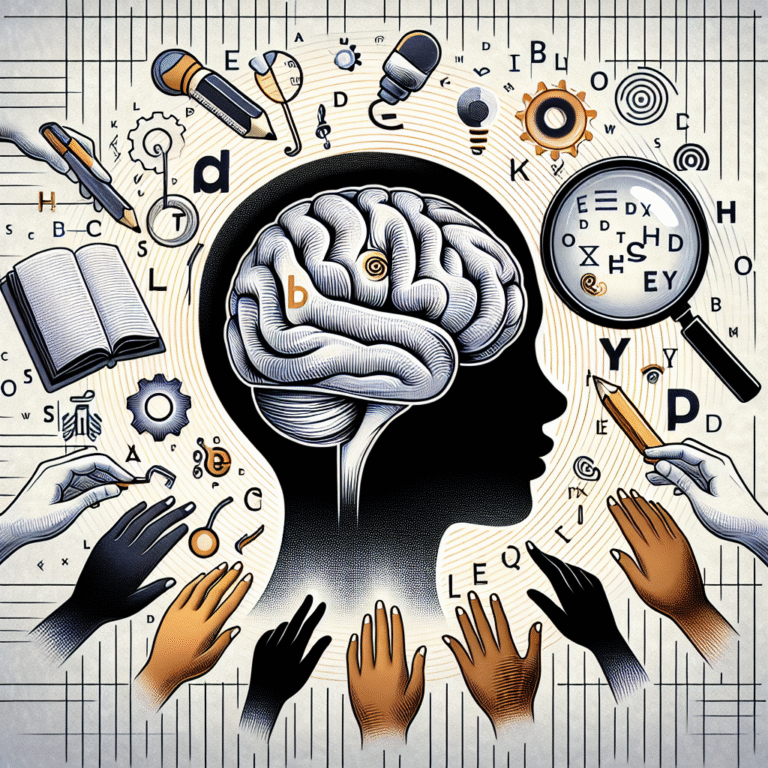
Building Bridges: How to Foster Open Dialogue About Learning Disabilities with Your Child – The Ultimate Guide
In a world where understanding and acceptance are crucial for nurturing the potential of every child, the topic of learning disabilities often remains shrouded in confusion and stigma. "Building Bridges: How to Foster Open Dialogue About Learning Disabilities with Your Child" is more than just a phrase; it’s a vital approach towards creating an environment where open communication flourishes. As parents, caregivers, and educators, we hold the key to bridging gaps in understanding and promoting emotional well-being. This article dives deep into strategies and insights that can empower you and your child to confront the challenges of learning disabilities constructively.
Introduction
Imagine the moment when you first notice that your child learns differently than others. Reactions can range from concern to confusion. Often, parents might feel unequipped to tackle the nuanced conversations about learning disabilities. Yet, these discussions are vital for the emotional and intellectual growth of your child. Studies indicate that children who receive open conversations about their learning challenges often exhibit greater self-esteem and resilience. Therefore, let’s explore the strategies that will help you engage in meaningful dialogues with your child about learning disabilities, fostering understanding and motivation.
Understanding Learning Disabilities
What Are Learning Disabilities?
Learning disabilities (LD) are neurological disorders that affect the brain’s ability to receive, process, and respond to information. Common forms include dyslexia, dyscalculia, and attention deficit hyperactivity disorder (ADHD). A significant aspect of learning disabilities is that they are not indicative of a child’s intelligence; instead, they highlight unique learning styles that need accommodating.
Statistics that Matter
Understanding the prevalence of learning disabilities offers perspective on why fostering open dialogue is crucial.
| Learning Disability | Prevalence (%) |
|---|---|
| Dyslexia | 5-15% |
| Dyscalculia | 3-6% |
| ADHD | 5-10% |
Case Study: Sarah and Her Struggles with Dyslexia
Sarah, a 9-year-old, faced challenges in reading compared to her peers. Her parents discovered this during the second grade when she consistently struggled with spelling and comprehension. Through open dialogue, they began discussing dyslexia, explaining it in child-friendly terms. This conversation transformed Sarah’s fear into understanding, helping her to seek support and embrace her unique learning style.
Analysis of the Case Study
This example illustrates that early intervention—rooted in open dialogue—can significantly shift a child’s perspective on their learning challenges, paving the way for constructive coping strategies.
Creating a Safe Space for Dialogue
The Importance of Open Communication
Open dialogue empowers children to express their feelings and struggles. Research emphasizes that children who feel safe and supported are more likely to open up about their anxieties surrounding learning disabilities.
Strategies to Foster Open Dialogue
- Use Age-Appropriate Language: When discussing learning disabilities, tailor your language to your child’s age and understanding.
- Emphasize Strengths: Highlight your child’s strengths to foster a balanced perspective on their abilities.
- Normalize the Experience: Explain that many children face similar challenges, promoting solidarity and reducing the stigma around learning disabilities.
Practice Active Listening
Active listening is critical in creating an emotionally supportive environment. Show empathy and validate your child’s feelings. When they realize you are invested in understanding their experience, they will feel more inclined to share openly.
Case Study: David’s Open Communication with His Parents
David, a 12-year-old diagnosed with ADHD, struggled with focus during school. His parents initiated regular check-in conversations where David could express his frustrations without judgment. Over time, this practice fostered a supportive atmosphere, allowing David to articulate his needs and develop self-advocacy skills.
Analysis of the Case Study
David’s story highlights the effectiveness of routine communication. By integrating regular discussions about his learning challenges, his parents helped David become more self-aware and proactive in seeking assistance.
The Role of Educational Professionals
Collaborate with Teachers and Support Staff
Collaboration between parents and educators is essential when discussing learning disabilities. Teachers can provide insights regarding your child’s learning style and classroom behavior, enriching your understanding of their unique challenges.
Developing an Individualized Education Plan (IEP)
An IEP is a tailored plan designed to meet the specific educational needs of a child with learning disabilities. Engaging in discussions about IEP goals with your child will help them feel involved in their learning process.
Case Study: Emily’s IEP Journey
Emily, a 10-year-old with dyscalculia, initially struggled with her math lessons. After collaborative discussions with her teachers, Emily’s parents helped develop an IEP that incorporated visual learning techniques to aid her understanding of numbers.
Analysis of the Case Study
By involving Emily in her IEP discussions, her parents not only empowered her but also instilled a sense of responsibility in her learning journey, transforming potentially overwhelming challenges into manageable steps.
Encouraging Self-Disclosure
The Importance of Encouraging Conversations
Encouraging your child to be open about their learning disabilities is crucial. Self-disclosure enables your child to navigate their educational environment with confidence.
Role-Playing Scenarios
Engaging your child in role-playing discussions can help them practice how to communicate their needs to peers and educators. By simulating different scenarios, you build their confidence for real-life interactions.
Case Study: Jake’s Role-Playing Success
Jake, who faced challenges with his peers due to his learning disabilities, practiced conversations about his needs through role play with his parents. This exercise empowered him to articulate his struggles effectively, transforming his school interactions positively.
Analysis of the Case Study
Role-playing equips children with the tools to engage in meaningful conversations. By using practice sessions, Jake learned not only to advocate for himself but also to open up lines of communication with his peers.
Using Resources Effectively
Books and Tools for Open Conversation
A wide range of literature and tools addresses learning disabilities. Utilize age-appropriate books that explain learning differences in relatable terms.
- "All Kinds of Minds" by Dr. Mel Levine
- "The Girl Who Thought in Pictures" by Julia’s story on autism
- "My Dyslexia" by Philip Schultz
Online Support Groups and Communities
Leveraging online platforms can provide additional opportunities for dialogue. Parents can join forums and discussion boards to share experiences, tips, and encouragement.
Case Study: Lisa’s Exploration of Resources
Lisa’s family explored various online resources collectively. They found a support group that allowed for shared experiences among families with similar challenges, fostering a sense of community and understanding about learning disabilities.
Analysis of the Case Study
Lisa’s family exemplifies the importance of community in navigating learning disabilities. Support and shared narratives can normalize experiences while equipping families with strategies to facilitate open discussions.
Implementing Positive Reinforcement
The Power of Encouragement
Positive reinforcement can encourage your child to take steps toward effective self-advocacy. Rewarding their efforts, no matter how small, strengthens their motivation to engage in these conversations.
Celebrate Progress, Not Perfection
Acknowledge the small victories in your child’s learning journey. Emphasizing the learning process over the end result can alleviate the pressure they may feel and enhance their willingness to open up about challenges.
Case Study: Mia’s Journey to Self-Confidence
Mia was hesitant to participate in class due to her learning disability. After her parents began celebrating her participation, no matter how small, Mia felt encouraged to share her ideas and engage in discussions.
Analysis of the Case Study
The reinforcement of Mia’s efforts led to a substantial improvement in her confidence. Positive feedback fosters a supportive environment where children feel valued, enhancing their openness to discussing difficulties.
Conclusion
Navigating the complexities of learning disabilities requires a multifaceted approach that focuses on open dialogue. "Building Bridges: How to Foster Open Dialogue About Learning Disabilities with Your Child" is not merely a guideline—it’s a heartfelt mission to support your child through their unique learning experience. By fostering open communication, collaborating with educators, and being an active participant in your child’s educational journey, you’ll enrich their understanding of their learning differences. Remember, every conversation you have reinforces the bridge you are building together toward a brighter future.
FAQs
1. What are the signs of a learning disability?
Learning disabilities can manifest in various ways, including difficulty with reading, writing, math, or attention. Common signs include frustration when completing schoolwork, difficulty following instructions, or trouble with organization.
2. How do I start a conversation with my child about their learning disability?
Begin by creating a relaxed environment. Use age-appropriate language, share what you know, and allow your child to express their feelings. Normalize the discussion by sharing examples of learning differences.
3. Should I inform my child’s school about their learning disability?
Yes, informing the school is crucial for tailored support. Collaborate with teachers to establish an Individualized Education Plan (IEP) if necessary.
4. How can I advocate for my child in school?
Be informed about your child’s rights to accommodations and support. Build partnerships with teachers and staff, and advocate for your child’s needs respectfully and collaboratively.
5. What resources are available for parents of children with learning disabilities?
Numerous books, online communities, and support groups exist. Exploring these resources can provide guidance and shared experiences, enhancing your ability to support your child.
In this transformative journey, remember that fostering open dialogue about learning disabilities not only benefits your child but also strengthens the bond of understanding and love within your family. By building these bridges, you empower your child to thrive academically and emotionally, setting them on a path toward lifelong success.
















